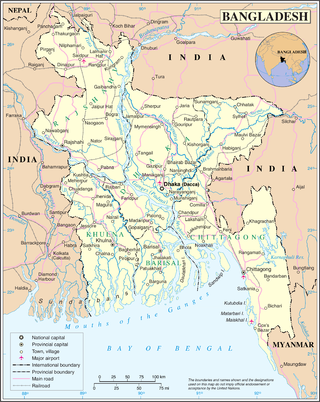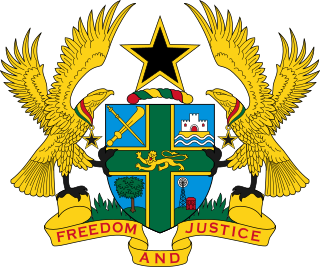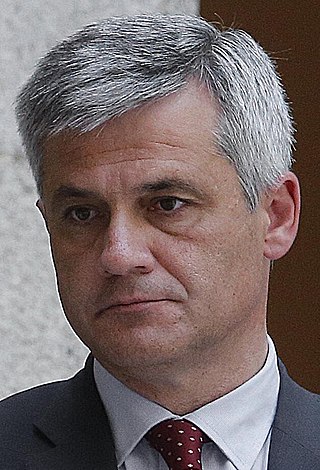
Since Bangladesh's independence in 1971, the transportation sector has grown rapidly and transportation medium on land and rivers have begun to develop. Air travel came into existence later. Though Bangladesh has greatly evolved in the transportation sector, it still has many flaws which hamper the development of other economic and social sectors. Transportation has evolved in mostly land vehicles but it still needs improvement in safety standards, which endangers the life of civilians.

The Ministry of Land, Infrastructure, Transport and Tourism, abbreviated MLIT, is a ministry of the Japanese government. It is responsible for one-third of all the laws and orders in Japan, and is the largest Japanese ministry in terms of employees, as well as the second-largest executive agency of the Japanese government after the Ministry of Defense. The ministry oversees four external agencies including the Japan Coast Guard, the Japan Meteorological Agency and the Japan Tourism Agency.

The Ministry of Transportation (MTO) is the provincial ministry of the Government of Ontario that is responsible for transport infrastructure and related law in Ontario, Canada. The ministry traces its roots back over a century to the 1890s, when the province began training Provincial Road Building Instructors. In 1916, the Department of Public Highways of Ontario (DPHO) was formed and tasked with establishing a network of provincial highways. The first was designated in 1918, and by the summer of 1925, sixteen highways were numbered. In the mid-1920s, a new Department of Northern Development (DND) was created to manage infrastructure improvements in northern Ontario; it merged with the Department of Highways of Ontario (DHO) on April 1, 1937. In 1971, the Department of Highways took on responsibility for Communications and in 1972 was reorganized as the Ministry of Transportation and Communications (MTC), which then became the Ministry of Transportation in 1987.
Te Manatū WakaMinistry of Transport is the public service department of New Zealand charged with advising the New Zealand Government on transport policy. The Ministry works closely with other government transport partners, including the New Zealand Transport Agency (NZTA) to advance their strategic objectives.

Jawaharlal Nehru National Urban Renewal Mission (JNNURM) was a massive city-modernization scheme launched by the Government of India under the Ministry of Urban Development. It envisaged a total investment of over $20 billion over seven years. It is named after Pt. Jawaharlal Nehru, the first Prime Minister of India. The aim is to encourage reforms and fast track planned development of identified cities. Focus is to be on efficiency in urban infrastructure and service delivery mechanisms, community participation, and accountability of ULBs/ Parastatal agencies towards citizens.

The water supply and sanitation sector in Ghana is a sector that is in charge of the supply of healthy water and also improves the sanitation of water bodies in the country.

The Ministry of Highways is divided into the Operations, Policy and Programs, and Corporate Services Divisions and the Communications Branch. The ministry is the employer of over 1,476 employees diversified amongst 105 communities in Saskatchewan. The current Minister of Highways and Infrastructure is Jeremy Cockrill.

The Ministry of Communications, is a Cabinet-level ministry of the Pakistani Government responsible for analysing, formulating and implementing central policy on communications and transportation. It is one of the oldest ministries, created on 14 August 1947. The Ministry of Communications has jurisdiction over telegraph and telephone communications as well as public radio, technical means of radio and television broadcasting and the distribution of periodicals. The Ministry and its political executive, the Communications Minister, are headquartered in the Cabinet Secretariat, Islamabad Capital Venue. The Communications Minister is a public appointee who must be a member of Parliament.

The Ministry of Environment, formerly the Environmental Protection Administration, is a cabinet-level ministry responsible for protecting and conserving the environment in Taiwan. This also includes, air quality, noise control, monitoring and inspection of environment, solid waste, recycling, sustainable development and international cooperation.

The Ministry of Road Transport and Highways (MoRTH) is a ministry of the Government of India, that is the apex body for formulation and administration of the rules, regulations and laws relating to road transport, transport research and in also to increase the mobility and efficiency of the road transport system in India. Through its officers of Central Engineering Services (Roads) cadre it is responsible for the development of National Highways of the country. Road transport is a critical infrastructure for economic development of the country. It influences the pace, structure and pattern of development. In India, roads are used to transport over 60 percent of the total goods and 85 percent of the passenger traffic. Hence, development of this sector is of paramount importance for India and accounts for a significant part in the budget.

Water supply and sanitation in Tanzania is characterised by: decreasing access to at least basic water sources in the 2000s, steady access to some form of sanitation, intermittent water supply and generally low quality of service. Many utilities are barely able to cover their operation and maintenance costs through revenues due to low tariffs and poor efficiency. There are significant regional differences and the best performing utilities are Arusha and Tanga.

Roads in Ghana form a network of varied quality and capacity. Responsibility for the road network differs between trunk and non-trunk routes. Trunk roads, which are the most important roads, are administered by the Ghana Highway Authority, which was established in 1974 to develop the trunk road network. Ghana's 13,367 km of trunk roads accounts for 33% of the total road network of 40,186 km. The Department of Feeder Roads is responsible for the construction and maintenance of feeder roads in Ghana, while responsibility for urban roads lies with the Department of Urban Roads. In the 18th and 19th centuries, the Ashanti Empire constructed a complex network of roads to link Kumasi with their territories in modern Ghana. For John Thornton, these roads improved transportation across the region by the 19th century.

Kerala Public Works Department (KPWD) is a department under the government of the state of Kerala, India. It manages the construction and maintenance of civil structures owned by the government viz; government buildings, government owned hospitals, roads, bridges etc. The KPWD was formed in 1956 following reorganization of states.

The Ministry of Roads and Urban Development is an Iranian government body in charge of providing and regulating the country's transport infrastructure, as well as setting policies for the housing sector and construction industry. This Ministry was formed on 27 June 2011, when the two ministries of Housing and Urban Development and Roads and Transportation were merged.

The Ministry for Chieftaincy and Traditional Affairs is the official Ghanaian agency responsible the creation of linkages between the Government of Ghana and the traditional authorities in the country. Based on recommendations by the African Peer Review Mechanism and the citizenry the Jerry John Rawlings administration established the ministry to address the recommendations. The Ministry was set up in 1993 and is backed by the Civil Service Law, 1993. Prior to its establishment, its functions were performed by two agencies namely the Chieftaincy Division Secretariat under the Office of the President and the Culture Division under the National Commission on Culture.

The Communication and Works Department is a department of the Government of Punjab, Pakistan. It is responsible for the planning, execution, maintenance, and repair of infrastructure projects in the province, including bridges, public buildings, and roads.
The Zimbabwe National Roads Administration (ZINARA) is a Zimbabwean parastatal responsible for the management, maintenance and development of Zimbabwe's national road network.
The Ministry of Planning is the cabinet-level ministry of the Iraqi government responsible for promoting economic growth and human development through strategic planning. It collaborates with the private sector as well as international institutions, monitors the implementation of investment projects, develops economic and social policies, evaluates legislation and conducts censuses. Furthermore, among its missions is to lay the foundation for data-driven decision-making by promoting information technology and developing a comprehensive national database in line with the government's vision of creating an information society. It works to realise sustainable development, social justice, poverty-alleviation as well as the reduction of unemployment, enhancement of institutional capacities, and development of standardisation.

The Secretary of State for Infrastructure, Transport and Housing (SEITV) is a high-ranking official of the Ministry of Development of the Government of Spain. The SEITV is appointed by the King of Spain at the proposal of the Minister of Development.

Environment and Ecology Bureau is one of the fifteen policy bureau of the Government of Hong Kong. The agency was established on 1 July 2022. The current Secretary for Environment and Ecology is Tse Chin-wan.
















